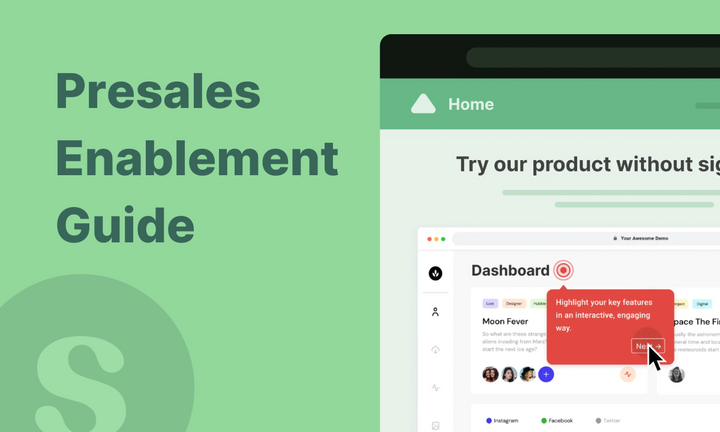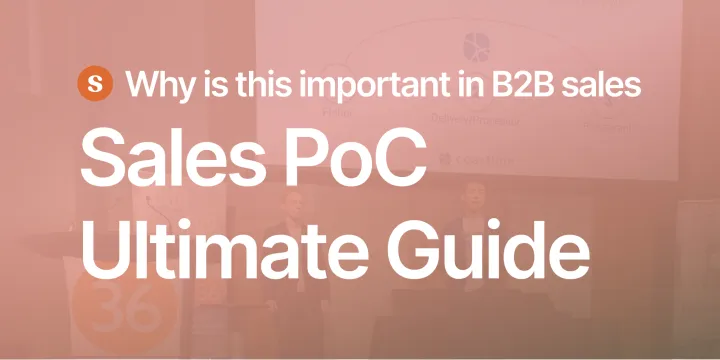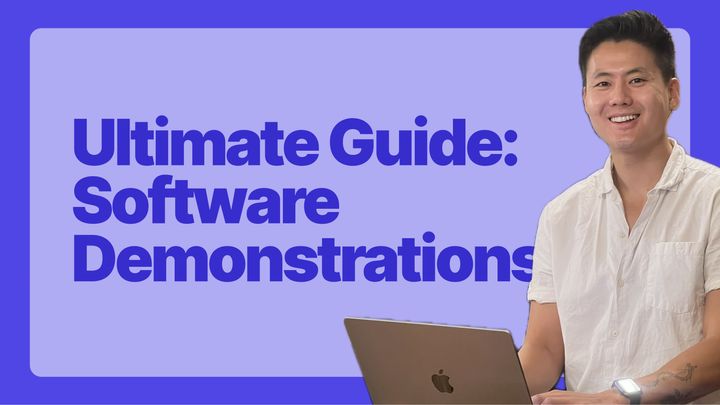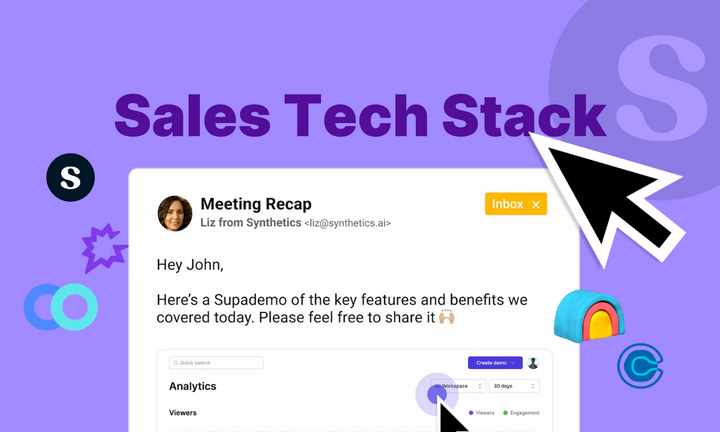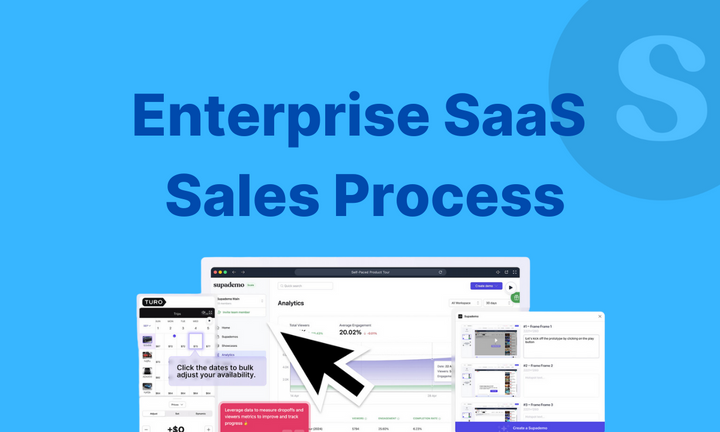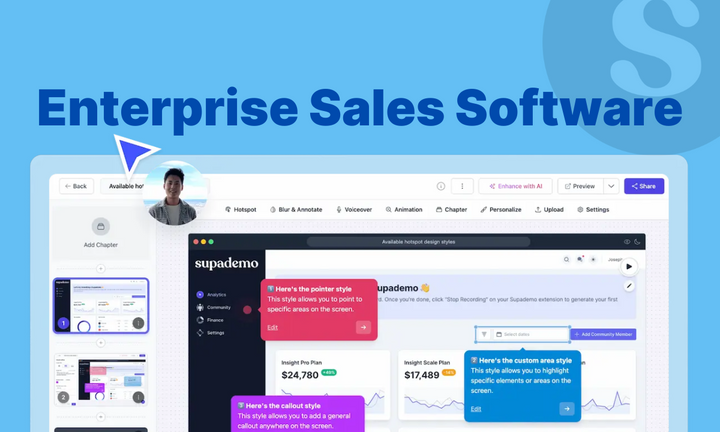Your sales team is doing its thing—booking meetings, running discovery calls, pushing deals forward. But somewhere in the middle, things stall. The prospect is interested, but they’re stuck in the “how does this actually work for us?” stage.
That’s where presales come in, bridging the gap between curiosity and conviction. Presales enablement isn’t about giving your SEs more tools to juggle.
It’s about making sure they have exactly what they need: content, context, and clarity to run high-impact demos, handle objections, and guide buyers toward confident decisions.
Because in complex B2B deals, technical validation isn’t a side note. It’s the tipping point. In this guide, we’ll walk you through how to turn your presales team into a revenue-driving force. Let’s get into it.
Presales vs sales enablement
Presales and sales enablement are two distinct yet complementary functions in the sales ecosystem.
Presales (also called sales engineering or technical sales) focuses on providing technical expertise during the sales process, demonstrating product capabilities, conducting proof of concepts, and addressing technical questions to help validate solutions for prospects. Whether it’s custom interactive demos, integration diagrams, or sandbox environments, they’re there to prove fit and build trust.
In contrast, sales enablement is dedicated to equipping the entire sales organization with the tools, content, and information they need to sell effectively, including training, content management, process optimization, and performance analytics to improve overall sales productivity. While presales works directly with prospects alongside sales representatives, sales enablement works behind the scenes to empower the entire sales function.
And because they operate in different zones of the deal cycle, the kind of content they rely on looks totally different.
Think of it as strategy and execution, working together
Think of presales and sales enablement as two sides of the same revenue coin. Both aim to accelerate deals and drive growth, but how they do it is very different.
Presales teams are the technical storytellers. They step in when things get complex:
- Running live demos,
- Tailoring proof-of-concepts, and
- Answering product questions in the weeds.
Their strength? Deep product knowledge and the ability to translate features into real-world outcomes.
Sales enablement, on the other hand, is the team behind the pre-sales team.
- Building playbooks,
- Running onboarding programs,
- Ensuring reps have the right content at every stage of the funnel.
Their focus is on consistency, repeatability, and scaling what works.
What happens when these two teams don’t sync? You get content gaps, missed handoffs, and a disjointed buyer experience. But when they work in tandem, sales plays become smarter, demos land harder, and deals move faster.
| Area | Presales | Sales Enablement |
|---|---|---|
| Primary focus | Deal-specific support | Pipeline generation |
| Expertise | Product & technical knowledge | Sales skills & methodology |
| Content type | Demos, solution guides | Playbooks, battle cards |
| Target audience | SEs, Solutions Consultants | AEs, BDRs, SDRs |
| Key metric | Deal conversion & win rate | Ramp time, quota attainment |
How does presales enablement work?

Presales enablement helps your solution engineers show up prepared for the moments that matter, like demos, discovery calls, and technical deep dives.
It’s not just a one-time training or product walkthrough. It’s an ongoing system that gives SEs the tools, content, and support they need to handle real buyer conversations with confidence.
That includes:
- Easy-to-use demo tools to personalize walkthroughs for each prospect.
- Regular practice sessions and demo dry runs.
- Alignment with the sales process so SEs and AEs work as a team.
The goal? To make sure your presales team can clearly explain how your product solves real problems, so deals move forward faster.
Who owns what?
While presales enablement may sit under enablement or ops, it requires cross-functional buy-in:
- Presales leaders define standards and expectations.
- Product teams provide roadmap visibility and feature guidance.
- Marketing delivers positioning, messaging, and content.
- Sales enablement ensures alignment across roles.
Together, they create a system where SEs aren’t just technically brilliant but business-ready.
Presales enablement tools: Types and examples
From early discovery to post-demo follow-ups, presales teams rely on a mix of tools to move deals forward faster, smarter, and with fewer handoffs. Here’s a closer look at the categories that matter (and where to look for the right fit):
1. Product configuration tools
Presales teams frequently face questions that go far beyond "what does your product do?" Buyers want to know how it fits into their specific workflows, tech stacks, and pricing requirements. That’s where product configuration tools come in.
These tools help solution engineers model use-case-specific setups, generate pricing quotes, and create tailored solution designs during the presales process. With accurate, scalable configuration, teams reduce back-and-forth and build buyer confidence early.
Integration with CRMs is key, ensuring that insights from discovery calls are reflected directly in the configuration process.
For SaaS teams, this shortens deal cycles by helping SEs quickly translate needs into solution architecture.
Presales should look for tools that offer robust rule engines, visual configuration interfaces, and quote-to-contract workflows that don’t require deep coding expertise. Bonus points for tools that support sandboxing or simulation so teams can show their configurations in action.
2. Product demo software
When a product is feature-rich, complex, or highly customizable, the quality of your demo can make or break the deal. Unfortunately, many teams still rely on generic slides or one-size-fits-all demos that don’t reflect a prospect’s actual needs.
That’s where interactive demo software comes in.
Supademo lets SEs build guided product walkthroughs in minutes, without needing a staging environment or developer time. From onboarding walkthroughs to tailored proof-of-concept flows, these demos are easy to embed in emails, pitch decks, or even directly into CRMs.
For example, let's say our buyer wants to see how a feature works in their context. Instead of scheduling a new call or spinning up a custom instance, you can send an interactive Supademo that highlights just that. This async, self-serve model keeps the momentum going, especially with enterprise deals that involve multiple stakeholders.
👉 Learn more about how sales teams are improving efficiency with interactive demos in the State of Interactive Demos 2026 report.
Presales teams should prioritize demo tools that allow for modular customization, usage analytics, and seamless sharing. Supademo, for instance, tracks viewer engagement, so SEs can see which parts of a demo resonated and follow up with targeted support.

3. Competitive intelligence platforms
Every buyer asks: “How do you compare to X?” And without strong competitive intelligence, that question becomes a stumbling block.
Competitive intelligence platforms give presales teams a centralized, up-to-date source of competitor insights, including feature comparisons, objection-handling scripts, and battlecards.
Instead of scrambling for scattered docs or relying on anecdotal information, SEs can walk into demo calls with sharp, confident responses. These platforms also allow GTM teams to contribute and validate intel in real time, creating a feedback loop between sales, product, and marketing.
Look for tools that offer Slack or CRM integrations, real-time notifications, and customizable views for different teams. For presales specifically, the ability to quickly surface relevant comparisons mid-call is non-negotiable.
4. Sales discovery tools
Great demos don’t happen in a vacuum, they’re built on deep discovery. Sales discovery tools help presales teams capture, structure, and synthesize buyer needs before any screenshare starts.
These insights help SEs personalize their demo narratives and highlight the right capabilities.
When reps can review past conversations, see exactly where the buyer’s focus lies, and tailor their proof-of-concept accordingly, win rates go up. Discovery tools also help presales align more closely with AEs, ensuring nothing gets lost between discovery and demo.
Key features to prioritize include conversation intelligence, keyword tagging, topic tracking, and integrations with demo or enablement platforms. The goal: to turn qualitative call data into actionable sales enablement.
5. Sales automation & CRM software
No enablement stack is complete without strong CRM and automation tools.
A well-configured CRM ensures that SEs have visibility into the deal stage, persona, pain points, and past interactions before a single demo is built. Automation workflows can trigger demo requests, flag accounts needing technical input, or even assign SEs based on product-line expertise.
Look for CRM setups that allow presales to tag and filter accounts, sync notes from discovery tools, and create activity reports that tie back to revenue outcomes. Bonus if your automation platform supports templated follow-ups or proposal generation based on what was shown in a demo.
6. Content collaboration & proposal generation tools
Once the technical win is secured, it’s time to translate that into proposals, validation docs, and follow-up materials. Content collaboration tools streamline that final mile.
These platforms also support e-signatures, version control, and analytics on open/view time.
Presales teams benefit from the ability to duplicate proposal templates, personalize based on discovery notes, and embed interactive demos (like Supademos) directly into proposals. That way, the buying team can revisit key workflows, share with internal stakeholders, and move faster toward a decision.
Key capabilities to look for: document analytics, content locking for legal-approved sections, integrations with CRMs or cloud drives, and easy embedding of visuals or live demos.
How to enable your presales teams: Beyond the tools
Great tools are only half the battle; what truly drives presales success is how you develop and support the people behind them. Let’s look at the practices that separate high-performing presales teams from the rest:
Regular training and certifications
A solid enablement calendar should mix live workshops, on-demand refreshers, and certifications like AWS Solutions Architect or MEDDPICC. But certifications alone aren’t enough.
Caleb John, Director of Sales and Marketing at Exceed Plumbing and Air Con, takes a hands-on approach:
"Every new hire rides along for 30 hours minimum before quoting anything. Then they get walked through our service matrix, which breaks down pricing for 68 individual tasks.
Once per month, I even run scenario drills with the crew. They have to quote on the spot, explain it, and document it within our tablet app. Whoever nails the clarity gets a $50 voucher. The idea is to make fast quoting feel like muscle memory, not a panic."
Sales methodology alignment
Presales don’t operate in isolation—they support how sales are sold. Whether your team uses SPIN, MEDDPICC, or Challenger, make sure presales is fluent in the language of the sales floor.
This ensures smoother handoffs and stronger alignment during discovery and solutioning. Bring them into sales training or run role-specific adaptations to make the methodology practical.
Collaboration with sales
Your SEs should be co-pilots, not passengers. Encourage joint planning sessions, demo dry runs, and shared Slack channels between presales and AEs. When they prepare together, they win together. You can also assign SEs to specific reps or segments for deeper familiarity and faster execution.
Sara Cooper, Director of Web Strategy at Simpro, who works closely with sales and presales teams, shared how they do it:
"At Simpro, collaboration with our sales team is at the heart of how we support and train our pre-sales team. We don’t just hand over content, we sit down with sales regularly to understand what’s working, what questions prospects are asking, and where deals are getting stuck. We also use feedback from sales to update our messaging and value props, so everything stays aligned."
Customer success orientation
Presales should understand the customer’s journey after the deal closes. This helps them position solutions with long-term success in mind.
Host monthly syncs with your CS team or share anonymized onboarding reports to help SEs grasp what success looks like post-sale, and how they can sell into it.
Industry specialization
Presales credibility grows when SEs speak the buyer’s language. Assign industries by SE strength, then invest in vertical-specific enablement.
That might mean creating internal industry wikis, running peer-learning sessions, or offering budget for courses and certifications related to that field.
Standardize the presales process
A repeatable framework beats hero work. Define what “good” looks like in presales support from demo formats and discovery templates to handoff docs.
Use templates and playbooks stored in a central knowledge base. That way, the team spends less time guessing and more time selling.
Performance measurement
Move beyond win rates. Track demo influence, deal velocity, content usage, and post-demo feedback. Use CRM-integrated dashboards to surface SE impact across the funnel and tie it back to revenue. This visibility builds buy-in across leadership.
Here's something that Dorian Menard, Founder of Search Scope does:
"I care more about learning velocity than just raw numbers when measuring performance. I track how quickly someone turns feedback into action. We use shadow recordings, then I will sit down with a rep to mark the moment in a call where they either missed or caught a key trigger.
One of our newer reps last quarter turned around a slow start by identifying a specific type of hesitation buyers had and built his own mini-script to address it. Watching someone take control like that tells me they are not just executing but thinking strategically. That's what I want in a team."
Feedback & recognition
Presales work often happens behind the scenes. Make it visible. Collect feedback from AEs and CS reps after key milestones and celebrate the behind-the-scenes moments that help deals move forward. Even small shoutouts can go a long way in reinforcing good habits and boosting morale.
Laurence Bonicalzi Bridier, CEO of Artmajeur by YourArt, shared how a simple shift in recognition changed everything:
"A while back, I noticed that our pre-sales team was hitting targets, but the energy felt flat. There were wins, but no one was celebrating them. So we started small: every Friday, we highlighted one story from the previous week in which a rep went above and beyond. The first week we did this, another rep used the same strategy and closed a 40% larger order.
We also included a "Win of the Week" voting, in which teammates can nominate each other. It immediately changed the vibe—less competition and more collaboration. One representative informed me that she began experimenting more because she felt noticed, rather than evaluated."
Examples of pre-sales enablement collateral and resources
Hiring great talent is just one part of the presales equation.
To drive real impact, teams need access to the right enablement resources—tools that help them show up prepared, persuasive, and aligned.
Here’s a look at the assets high-performing presales teams count on to close complex deals:
Product knowledge base
The best presales teams are product experts, but they don’t memorize everything. That’s what a centralized product knowledge base is for. It houses detailed documentation on features, integrations, compliance, APIs, and common use cases—all searchable and up to date.
For example, Airtable’s Help Center—a public-facing knowledge base used by both internal teams and customers. It includes categorized guides, product walkthroughs, and release updates.
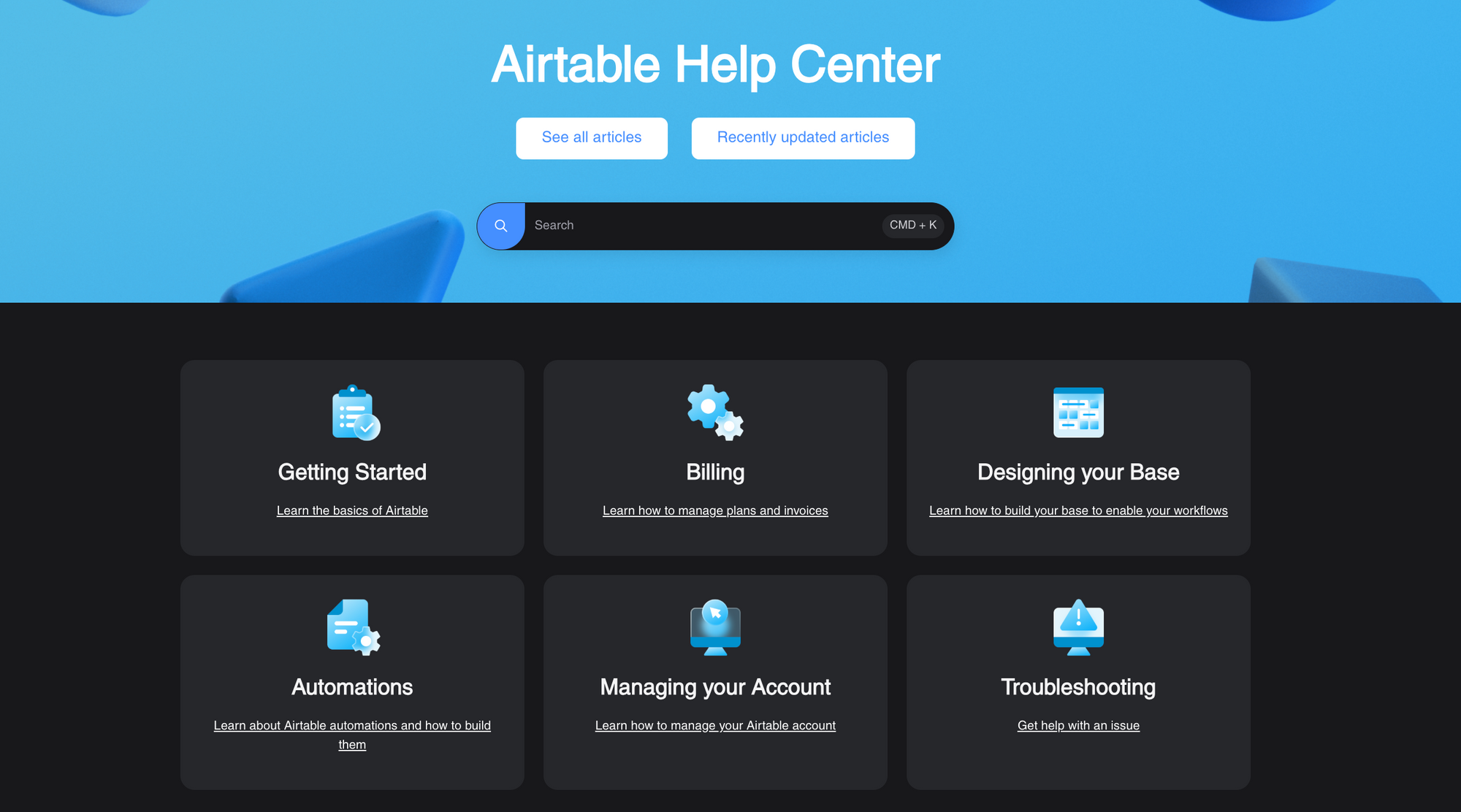
Sales battlecards
Presales is about navigating objections and positioning against competitors. Battlecards give SEs the ammunition they need: strengths, weaknesses, win themes, feature comparisons, and sample talk tracks.
For example, here's Hubspot's sales battlecards:
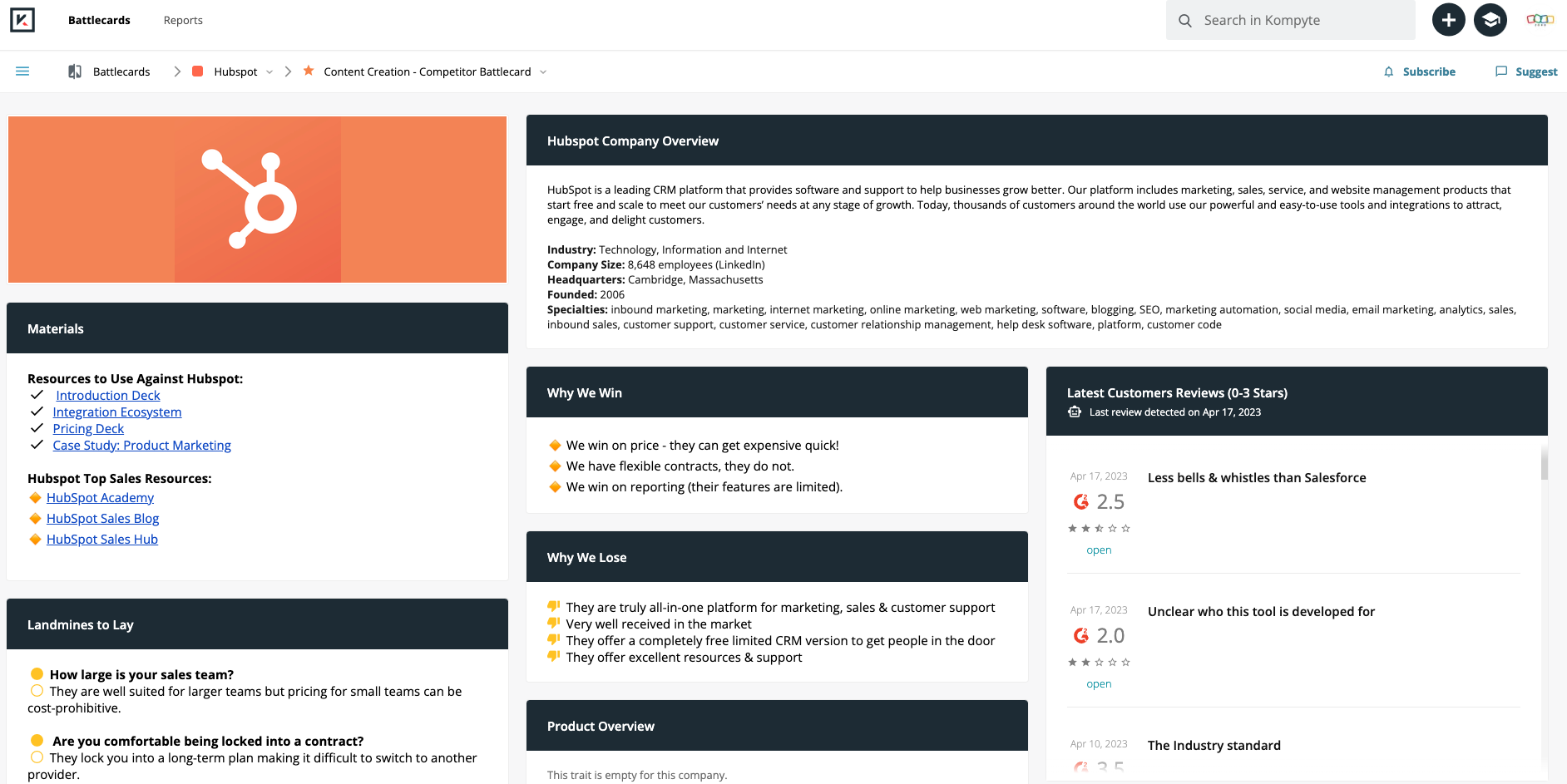
Interactive demos and presentations
Static slides fall short when buyers want to see your product in action. Presales teams increasingly rely on interactive demos that replicate real-world use cases, tailored by persona, industry, or workflow.
That’s where tools like Supademo come in. Instead of spinning up staging environments, SEs can build click-through walkthroughs in minutes. Let’s say a retail prospect wants to explore your analytics dashboard—you send a Supademo link that shows exactly how it works.
Something like this:
These demos are visually rich, trackable, and easy to embed in decks or proposals, turning one demo into a repeatable asset across deals. For example, beehiiv: by replacing passive video tours with self-serve Supademos, the team increased free-to-paid conversions by 50% and added $10K in revenue in under two months.
Industry research and reports
Presales teams that understand a buyer’s business don’t just talk features—they frame solutions around industry needs. That’s where market reports, benchmarks, and analyst research shine.
For example, say you’re working with a healthcare buyer. Referencing HIPAA trends or quoting Gartner’s 2024 cloud study boosts credibility and shows you’ve done your homework.
Role-playing exercises
Role-playing lets SEs rehearse live demos, tighten talk tracks, and prepare for curveball objections.
Picture a monthly session where one rep plays the skeptical CFO and another runs a Supademo walkthrough. These dry runs reveal product knowledge gaps and sharpen delivery.
Peer learning and coaching
Some of the best insights don’t come from docs—they come from teammates. Peer learning via shadowing, demo reviews, and Slack threads allows SEs to share what actually works.
Let’s say one SE refines a flow that consistently closes deals. Sharing that in a weekly sync turns a personal win into a team-wide advantage.
Enable your presales teams to create winning interactive demos with Supademo
Presales teams are often stuck between two extremes: relying on generic demos that don’t reflect the buyer’s real use case, or sinking hours into building highly customized walkthroughs that become obsolete the moment the product changes.
Supademo was built to solve that tension.
Instead of recording yet another video or coordinating with engineering to create a sandbox, presales teams can use Supademo to create interactive, click-through demos in minutes.
These demos mirror real user flows and can be easily tailored to fit different personas, verticals, or deal stages. And when the product changes? Just swap a step or two, no need to re-record from scratch.
Key features built for presales:
- Interactive, click-through tours that replicate your product experience.
- If there are any product updates, edit specific steps anytime, instantly.
- Engagement analytics like completion rates, click paths, and drop-offs.
- Seamless integrations with CRMs and sales tools for easy sharing.
Spare streamlined its pre-sales workflow by replacing manual demo creation with Supademo—saving 50+ hours each month and speeding up deal velocity by over $1 million across the sales team.
If you’re looking to reduce demo overhead while making every walkthrough feel personal, Supademo is worth a spin.
Try Supademo free—no signup or credit card required.
Presales enablement FAQs
What is the pre-sales role?
Pre-sales teams support the sales process by showing prospects how the product meets their specific needs. They run demos, handle technical questions, and build custom solutions to prove value before the deal is closed.
Budget allocation for presales enablement
There’s no set formula, but many teams align it with sales enablement budgets. This includes tools, training, certifications, and resources that improve presales productivity and deal impact.
Measuring ROI of presales enablement
Start by tracking metrics like win rates, deal cycle length, and engagement with presales content. You can also look at how often assets are reused and how quickly reps can get up to speed.
Challenges in implementing presales enablement and solutions
Common hurdles include misalignment between teams and outdated content. Solve this with regular syncs, easy-to-update tools, and clear goals that keep sales and presales on the same page.
Conclusion
Presales enablement sits at the core of successful sales motions. It brings clarity to complex solutions, helps teams speak the same language, and equips buyers with the confidence to move forward. When done right, it shortens sales cycles, sharpens messaging, and turns every demo into a meaningful conversation.
The best programs don’t stop at tools—they focus on building habits, refining processes, and encouraging cross-functional alignment. Whether it’s sharing insights from sales, surfacing competitive knowledge, or reinforcing product value through tailored demos, it all adds up to a smoother path to revenue.
As the sales environment grows more nuanced, presales teams are becoming more influential. The companies that win will be the ones who empower these teams with the right mix of training, resources, and autonomy.
And while enablement takes many forms, tools like Supademo help scale those efforts by making it easy to create, share, and adapt product walkthroughs across the entire buyer journey. Because when presales teams are supported well, the results speak for themselves.


